There's no place like home, especially for the teams in Mark Schlabach's post-spring Top 25. What makes each stadium stand out?
1. Ohio State

How much do they love football in Ohio? Well, Ohio Stadium was built near the Olentangy River and subject to flooding, but rather than move the location of the stadium, Ohio State decided to move the river. A bend in the river was eventually straightened to help prevent any flooding of the stadium because it was on a flood plain in Columbus. The Horseshoe was at times subject to a few floods despite straightening the riverbed, but it did help keep the waters at bay, proving that nothing, not even a river, will keep Ohio State fans from their football team. -- Tom VanHaaren
2. Florida State

In November 2004, FSU unveiled a massive stained-glass window featuring an image of former coach Bobby Bowden overlooking the field, a commemoration of the field being officially named for Bowden. The window, created by artist Robert Bischoff, is three stories tall, contains 112 panels and 8,500 pieces of glass and is one of the five largest stained-glass windows in the U.S. -- David M. Hale
3. Alabama
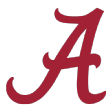
The visitors locker room at Bryant-Denny Stadium is named "The Fail Room." No, really, it is. James M. Fail, a 1949 graduate of Alabama, is a longtime donor who acquired the naming rights in 2008. The name is printed at the entry door in all caps. -- Sam Khan Jr.
4. USC

How's this for history? The Los Angeles Memorial Coliseum hosted the Olympic Games in 1932 and 1984, Super Bowls I and VII and the World Series in 1959. In 1987, Pope John Paull II celebrated mass there. Recently, USC began a $27 million renovation that will be completed by the 2019 season. -- Kyle Bonagura
5. Penn State
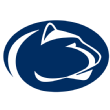
Beaver Stadium is loud exciting and it's also somewhat of a transformer. Parts of the current stadium were constructed from the old stadium, New Beaver Field, which was dismantled and moved to its current location. New Beaver Field held 30,000 people from 1909 to 1960 and was approximately a mile to the southwest of where Beaver Stadium sits. The field, which was made up of 700 pieces, was dismantled, moved and reconstructed along with 16,000 additional seats to create Beaver Stadium in 1960. The 46,284 capacity the stadium held in 1960 pales in comparison to the current crowds of 106,572. -- VanHaaren
6. Oklahoma State

The 14 luxury suites atop the Athletics Center that overlook the east end zone at Boone Pickens Stadium are the only suites in college sports that are used to view both football and basketball. Historic Gallagher-Iba Arena, the focal piece of the Athletics Center, is, in fact, attached to the football stadium. -- Mitch Sherman
7. Clemson

The nickname "Death Valley" for Memorial Stadium is partially derived from the state park, and a rock from the real Death Valley, given to legendary coach Frank Howard, now stands as one of the most famous college football monuments. But the name also stems from Woodland Cemetery, a faculty graveyard opened in 1924 next to the stadium and the Calhoun Family plots. Furthering the motif, Clemson now has a faux graveyard next to its practice facility, with gravestones marking road wins over top-25 opponents. -- Hale
8. Oklahoma

During the 1920s, the Sooners' mascot was a terrier named "Mex," whom an OU trainer had found serving as an army medic while stationed by the Mexican border. Donning a red sweater with a red letter "O" on the side, Mex would bark whenever OU scored a touchdown. He remains buried in a small casket somewhere under Owen Field. -- Jake Trotter
9. Washington

Thousands of fans arrive to Husky Stadium each game by boat and participate in what is affectionately known as "sailgating" at docks just steps from the stadium. There has been a lot of speculation over the years about whether The Wave started at Husky Stadium, but it remains a topic of debate. -- Bonagura
10. Auburn
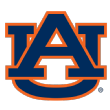
Before every home game, an eagle flies over Jordan-Hare Stadium and lands near midfield. Nova, the current War Eagle, has been doing it for more than 10 years. Upon its landing, the crowd chants in unison, "War Eagle, hey!" It's quite the pregame show. -- Khan
11. Wisconsin

Camp Randall Stadium will be celebrating its 100-year anniversary on Nov. 3, the day before the Badgers take on Indiana. The country's fifth-oldest college football stadium, Camp Randall is one of the few stadiums not named for someone associated with the program. In fact, the land was a military training center dating to 1861 where more than 70,000 troops were trained at Camp Randall complex during the Civil War. Once the war was over, the land was given to the university. In 1917, the 10,000-seat stadium was built, and the first game was played against Minnesota, a 10-7 win for Wisconsin. -- VanHaaren
12. LSU
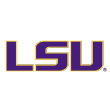
Once upon a time, students used to live at Tiger Stadium. As in, there were literally dorms installed into the stadium for more than 50 years. The football team even lived in them at one point. Though they were vacated years ago, the dorms still stood until recently, when they were mostly demolished and could make way for a food court and sports bar, according to athletic director Joe Alleva. -- Khan
13. Georgia
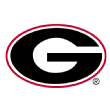
They say "between the hedges" at Sanford Stadium for a reason. The field is surrounded by hedges that were first planted in 1929 to make the stadium unique. They were even replaced in the late 1990s by a newer set. In Athens, the species (privet Ligustrum) is protected. -- Khan
14. Michigan

As if the Wolverines would let Ohio State outdo them with a natural water source story, Michigan has one of its own. Michigan Stadium was built where a spring was located, which made construction more difficult, because the land had to be lowered to take care of a large underground lake, according to Michigan's website, MGoBlue.com. While this is unconfirmed, one of the more notable legends of Michigan Stadium is that there is an entire crane buried under the stadium because of the quicksand-like terrain where the stadium was first built. No one has been able to confirm the story, but it has been a part of the lore for years. -- VanHaaren
15. Miami

The Hurricanes share a home field with the Dolphins in the newly renovated Hard Rock Stadium, where there is more than just football to see. Dolphins owner Stephen Ross commissioned murals from 18 artists and had them placed around the stadium, including a portrait of Dolphins coach Don Shula jackhammered into a wall. -- Andrea Adelson
16. Stanford

Billionaire donor John Arrillaga has given millions of dollars to Stanford over the years, including the funds that allowed for a massive renovation to Stanford Stadium a little more than a decade ago. At his request, there are no advertisements fixed inside the stadium. It's a policy that dates back more than 20 years at Stanford's baseball stadium, Sunken Diamond. -- Bonagura
17. Louisville
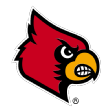
Every time Louisville scores a touchdown, a train horn sounds. There is something special about that sound, as deafening as it might be. The horn was salvaged from the South Louisville Rail Yard, which stood on the property before Papa John's Cardinal Stadium was built more than two decades ago. -- Adelson
18. Kansas State

School leaders approached Bill Snyder in 2005 about naming KSU Stadium after the retiring coach. Snyder, who had taken over the program in sad shape in 1989 and built it into a national contender, suggested they name it after the people who matter most to him -- hence the name Bill Snyder Family Stadium. Snyder, of course, returned to coach in 2009. -- Sherman
19. South Florida

The Bulls share Raymond James Stadium with the NFL's Tampa Bay Buccaneers, so the obvious showpiece is the 103-foot pirate ship that fires its cannons every time the Bucs score. But the cannons don't fire at USF games (and the ship is always off limits to fans). Still, there is another attraction that is sure to grab attention: A recently completed $140 million renovation gives the stadium the third-most video-board area of any stadium in the nation. -- Adelson
20. West Virginia

John Denver's 1971 hit "Take Me Home, Country Roads" has been played at every WVU home game since 1972. As West Virginia beat Cincinnati at the 1980 dedication of Mountaineer Field, renamed Milan Puskar Stadium in 2004, Denver performed the song. It was approved as the official state song of West Virginia in 2014. -- Sherman
21. Florida
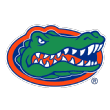
Since 1993, a sign reading "Work 'em silly, Gators" has been a constant at home games. Pete Calamore, a Florida alumnus, has been bringing the sign and hanging it in the northeast corner of the stadium for home games since then. The words are spray-painted on a white bedsheet. Jeri Spurrier, wife of Steve Spurrier, told Calamore in 1995 that she looked for the sign at every game. It has traveled to road games as well, and Calamore said LSU fans stole it and shredded it before the '97 LSU-Florida game. Calamore has missed only one home game since he started bringing it, and another fan brought it for him that day. -- Khan
22. Virginia Tech

The school didn't complete construction on Lane Stadium -- named after Edward H. Lane, a Virginia Tech grad and magnate in the cedar chest business -- until 1968, but the Hokies started playing there well ahead of time. In fact, the first game was played Oct. 2, 1965, with only the west stands and center section of the east bleachers completed, according to the school's website. -- Hale
23. Texas

Darrell K Royal-Texas Memorial Stadium was originally dedicated on Thanksgiving Day in 1924, after the Texas student body voted to name the stadium in honor of the 198,520 Texans who fought -- and the 5,280 who died -- in World War I. -- Trotter
24. Boise State
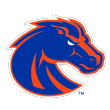
Since 1986, Boise State has played on blue turf that has made it one of the most easily identifiable playing surfaces in sports. What's not as well known is that Boise State actually owns a trademark that requires anyone -- high schools, other colleges, etc. -- who wishes to install an artificial turf field in any color but green to first receive permission from Boise State. -- Bonagura
25. Washington State

Martin Stadium, which is located in the center of campus, has the smallest capacity in the Pac-12 (32,952), but it's also the conference's only stadium with a larger capacity than the population of the city in which it's located (32,650). -- Bonagura
